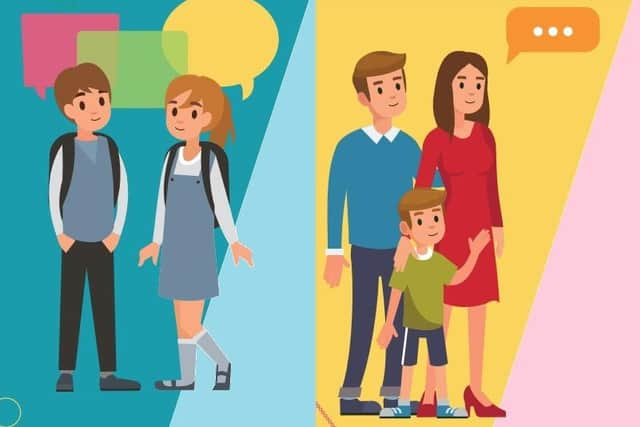Transgenderism: News Letter deep dive into school survey data shows percentage of Northern Irish 10 and 11-year-olds saying they are neither male nor female
and live on Freeview channel 276
If that 1% was extended across the whole Year 7 population in Northern Ireland – about 25,000 pupils – that would mean some 250 or so children in that year alone now regard themselves as neither male nor female.
Year 7 typically covers children aged 10 or 11.
Yesterday the paper reported that the same questionnaire had found 220 (some 2%) of all pupils who responded, including those both in primary and post-primary schools, had chosen "other" as their identity *.
Advertisement
Hide AdAdvertisement
Hide AdBut that questionnaire didn't break down the answers by age.
Now the News Letter has obtained further details from the Department of Education.
It shows 71 of those 220 responses came from primary schools, specifically from Year 7.
All of this comes amid concerns among clinicians of a huge upsurge in the numbers of children claiming to be transgender in the last several years.


Advertisement
Hide AdAdvertisement
Hide AdThe survey was done by the Education and Training Inspectorate: basically the school inspection wing of the department.
Its inspectors had drawn up a questionnaire which asked pupils to select which gender they are: 'Male, Female, Other, or Prefer not to say'.
In total, 14,665 responded, of which 7,082 were Year 7 pupils, and 7,583 were from Years 10, 12, and 14 (spanning ages roughly 13 to 18).
The pupils responded to statements like "I feel safe and cared for in my school," and "I know who to speak to in my centre and how to get help if I am unhappy or worried about my safety or wellbeing".
Advertisement
Hide AdAdvertisement
Hide AdThe post-primary pupils were also asked to respond to the following statement: "Everyone is made welcome at my school, including ... people who have different gender identities."
The News Letter wanted to see all the raw data from these surveys, but the department refused to provide it, claiming it is confidential.
The News Letter also asks who runs the Education and Training Inspectorate, since its report had no names attached.
It replied: “The functions for ETI are laid out in the Education and Libraries (Northern Ireland) Order 1986 (Article 102).
Advertisement
Hide AdAdvertisement
Hide Ad"Inspectors come from a range of education and training backgrounds and are appointed through a public appointment process.
“The Chief Inspector of ETI is Mrs Faustina Graham.”
It is extremely hard to gauge how many people are transgender, not least because there is no agreed defnition of the term.
The terms used to be used to describe people who have the medical condition gender dysphoria - sometimes described as a feeling that they were born in the wrong body.
But today gender activists use the term transgender in a far broader sense, saying that it is wrong to "medicalise" gender identity and that people can switch gender at will, at any age, without a diagnosis of gender dysphoria.
Advertisement
Hide AdAdvertisement
Hide AdThe Office for National Statistics has reported previously that "less than five" of the 3,600 respondents to the UU/QUB NI Life and Times Survey said they were transgender between 2016-18.
That would equate to somewhere between 0.1% and 0.02% of the population.
And, according to an article in Psychology Today by Dr Samuel Paul Veissiere in 2018, rates of gender dysphoria were "estimated at 0.005% to 0.014% of the population for natal males, and 0.002% to 0.003% for natal females", according to the DSM-5.
(The DSM is a vast tome of psychiatric conditions, used mainly in America; its fifth and most recent edition came out in 2013.)
Advertisement
Hide AdAdvertisement
Hide AdThe Psychology Today article goes on to say "rates of transgender identity appear to be on the rise, particularly among young people... transgender identity is now reported among young natal females at rates that clearly exceed all known statistics to date".
It also goes on to cite figures linking the emergence of "trans identities" in children to their social media consumption.
*It appears that what the school inspectors actually did was to take a figure of 1.5% and round it up to 2% for some reason.